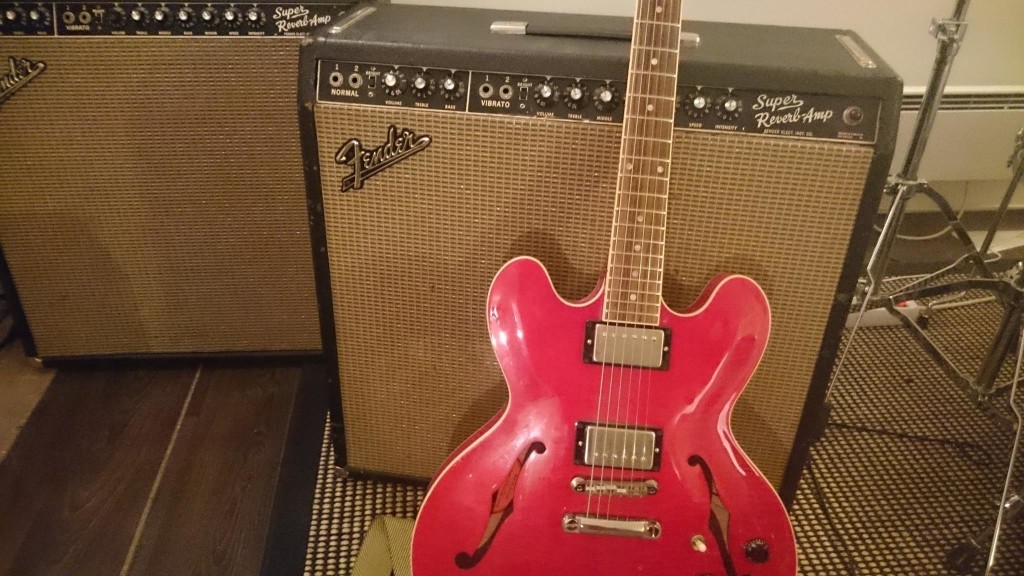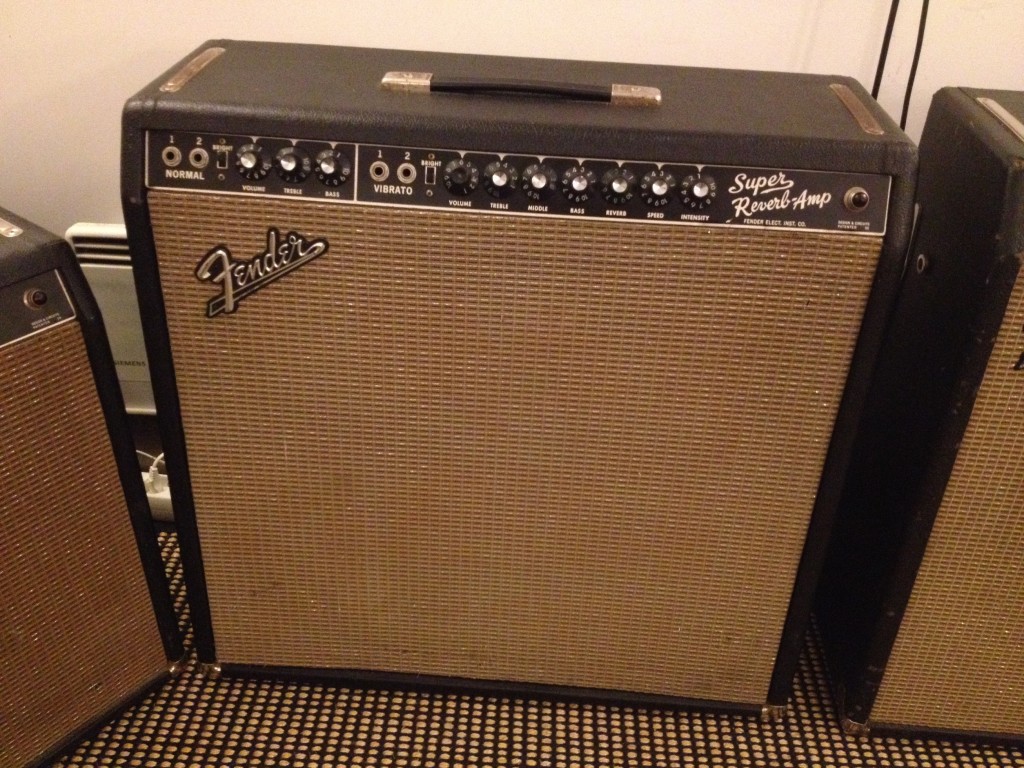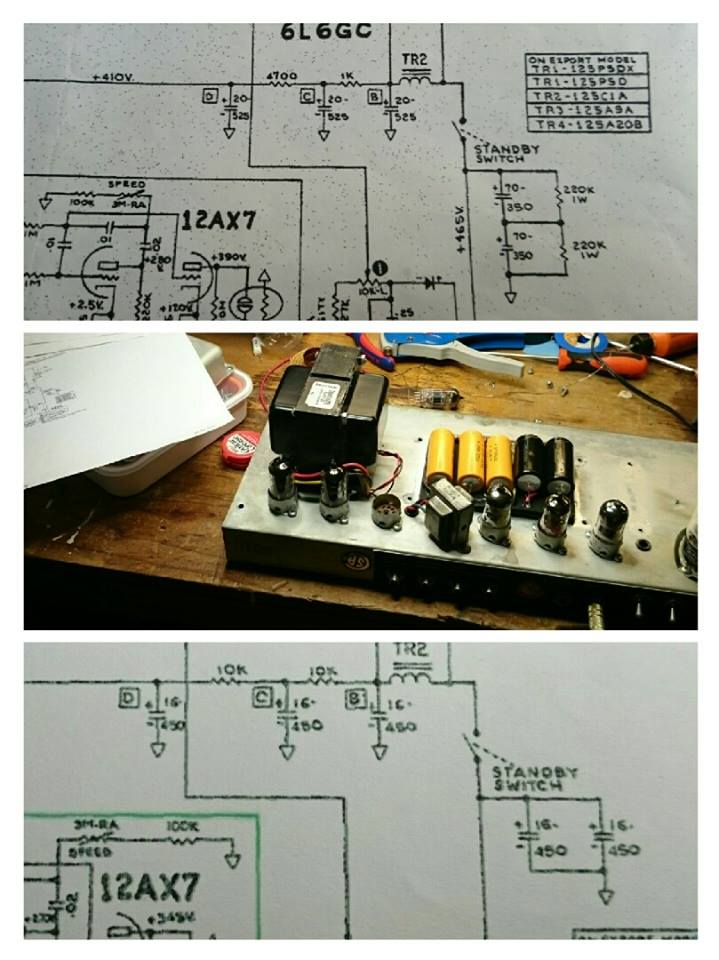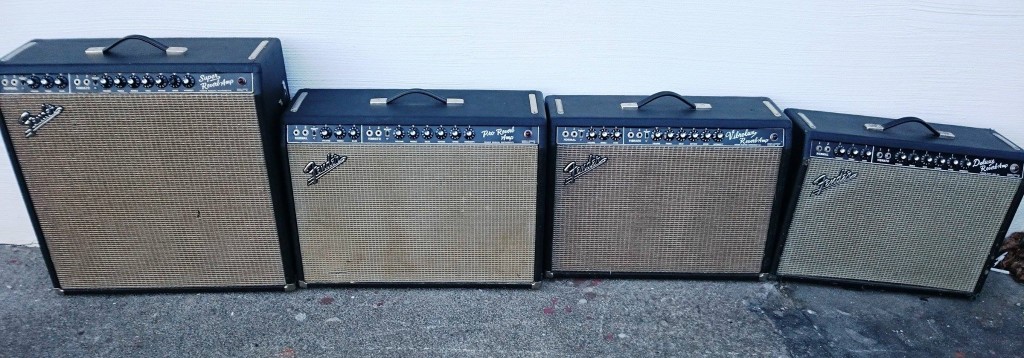Let’s explore the tone of the legendary blackface Super Reverb with the equally famous ES335 guitar. We’ll explain why this a killer combination and help you rediscover vintage guitar tone once again.
Semi-hollow-body humbucker guitars like the ES335 produce strong lower mids and loose, flabby lows. The signal is hot and strong (in watts) at the input of the amp and will cause breakup much sooner than with weaker single coil guitars. A humbucker is also louder than a single coil at a given volume setting, which is why Leo Fender created two inputs in most of his amps (he also had two channels, smooth and bright, sometimes reverb and non-reverb. Ahh so many options!… ). The high input 1 was meant for single coils and the low input 2 was meant for humbuckers. The low input 2 is dampened 3dB relative to input 1 by the extra 68K voltage divider resistor. The idea was that guitarists may want to swap single coils and humbuckers between songs and not having to adjust the volume on the amp. To this day we’ve never seen anybody use the Fender amps this way. But that’s a different story….
A hot guitar signal will cause more preamp distortion and less clean headroom than with single coils. Once the signal is distorted there is no way back to making it clean again. Many players have done simple amp mods to create more preamp gain like Pull V1, tremolo disconnect and 12ax7 phase inverter. All these are described in details on our web sitehttp://fenderguru.com. These mods should be most valued by single coil players. The default humbucker tone in with a blackface Fender amp is raw enough with just the right amount of hair on it. It is in our opinion an incredible tone that should not be messed up with the use of any pedal effect. All you need is a little touch of natural spring reverb from the amp.
In fact, some ES335 players might experience they have too little clean headroom with smaller amps like the Deluxe and Princeton Reverb. This is why a big 40W amp is a good match. Personally we just love the tone of a humbucker played clean or slightly cranked. Sadly, few players dare to play this clean these days. Those who do are respected greatly for their old school, vintage vibe.
The strong mids and loose, flabby low end of an ES335 will not only cause trouble for the preamp section. The power amp section will also struggle in delivering enough current through filter the caps, tube rectifier and the power transformer. The amp will kneel in all possible manners when set beyond its sweet spot, resulting in a dirty sound, particularly in the low end. If you completly turn down the treble with the tone knob on your guitar you’ll hear clearly the farty lows. The amp simply cannot deliver a clean firm bass tone with enough attack. With low power, vintage style speakers you may also experience speaker breakup, resulting in an even more complex and totally broken tone. Listen to i.e. Elmore James’ “Dust my broom” and you’ll get the idea of speaker breakup. If you have vintage speakers with original paper cones you must be really careful with the bass and mid settings on your amp when playing an ES335. The speakers can easily be shot down in flames by an ES335 and a burning blackface Fender amp. A good thing with the Super Reverb is that the four ten inch speakers will divide the power equally and they are less likely to blow, onother reason why the Super Reverb pairs well with humbuckers. If you have moderns speakers with 30-50w each, you’ll have no trouble handling a dirty sound.
To balance a mellow ES335 tone you need sparkle. The Super Reverb has more than enough sparkle with its four tens. The bright sounding ab763 circuity with bright switch on both channels will allow the highest frequencies to pass through.
Check out Mike Andersen playing the blues to hear the tone we’re talking about:
https://www.youtube.com/watch?v=Qytbn3uZsTY
https://www.youtube.com/watch?v=ihNnTR74beU
Our own 2005 ES335 has been upgraded with a ’59 pickup set from Cream T Pickups, made in the woods of Norway.http://www.creamtpickups.com/ They were cleaner and not as muddy as the original humbuckers.




